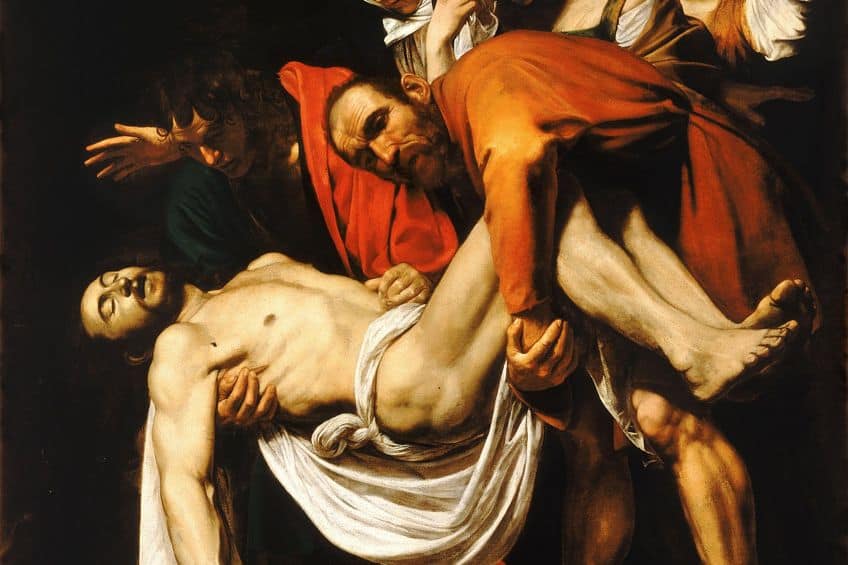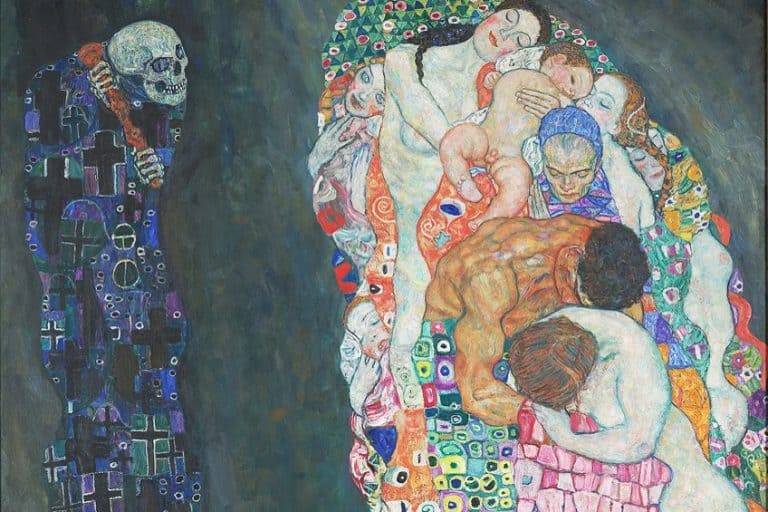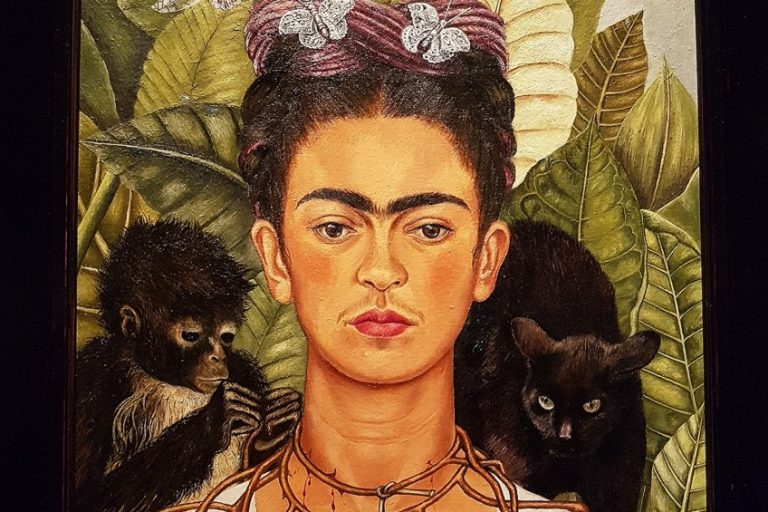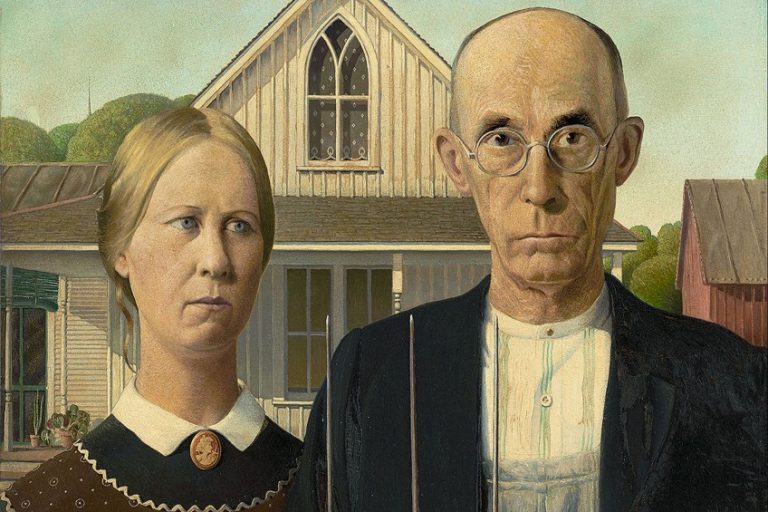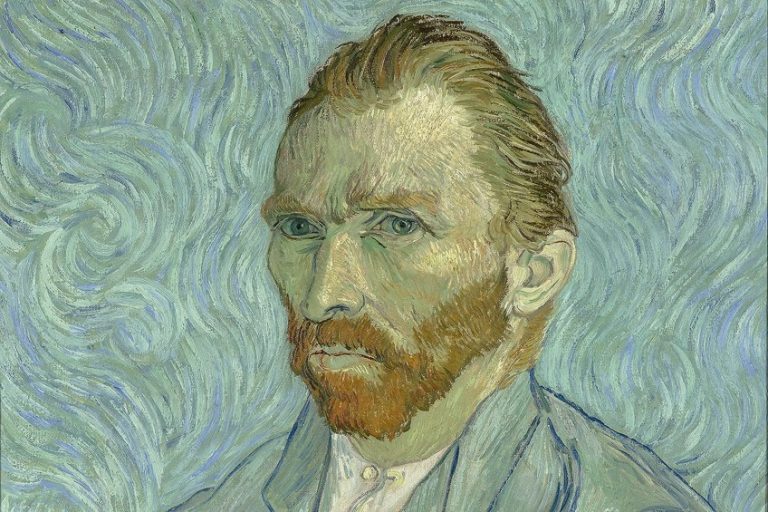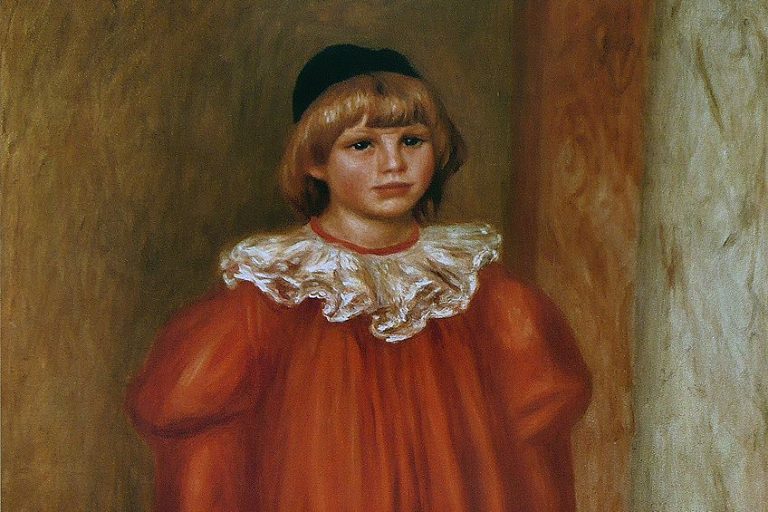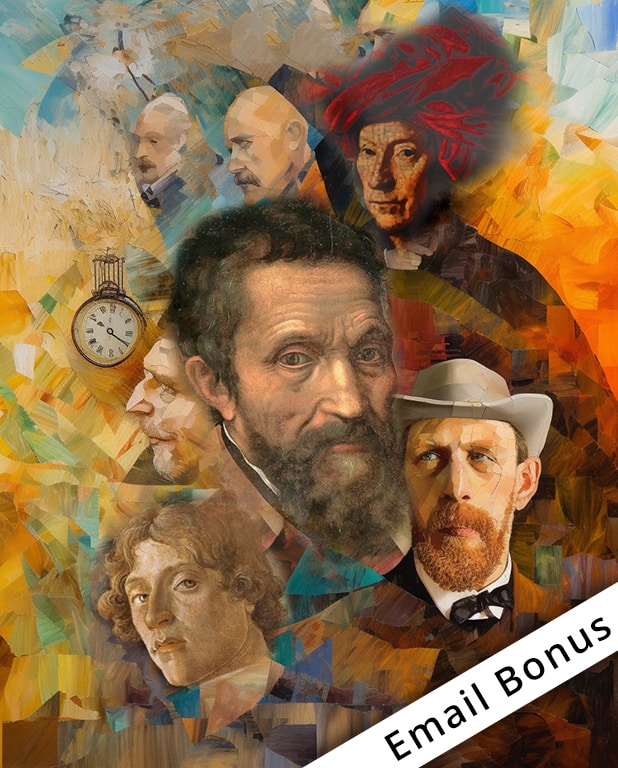“The Entombment of Christ” by Caravaggio – An Analysis
The Deposition of Christ is a popular theme in art history, and has been depicted by artists from the Early and High Renaissance all the way to Baroque and Contemporary art. This article will discuss The Entombment of Christ (c. 1600 – 1604) by Caravaggio, who was one of the most notable Baroque artists to live.
Table of Contents
Artist Abstract: Who Was Caravaggio?
Born on September 29, 1571, Michelangelo Merisi da Caravaggio was a Baroque artist who was known for his realistic and emotive paintings. His contrasts of dark and light, the technique known as tenebrism, popularized him as an artist. He was born in Milan Italy and lived in places like Caravaggio in Lombardy and Rome, Italy. He was known for having various conflicts and was prone to violent behaviors.
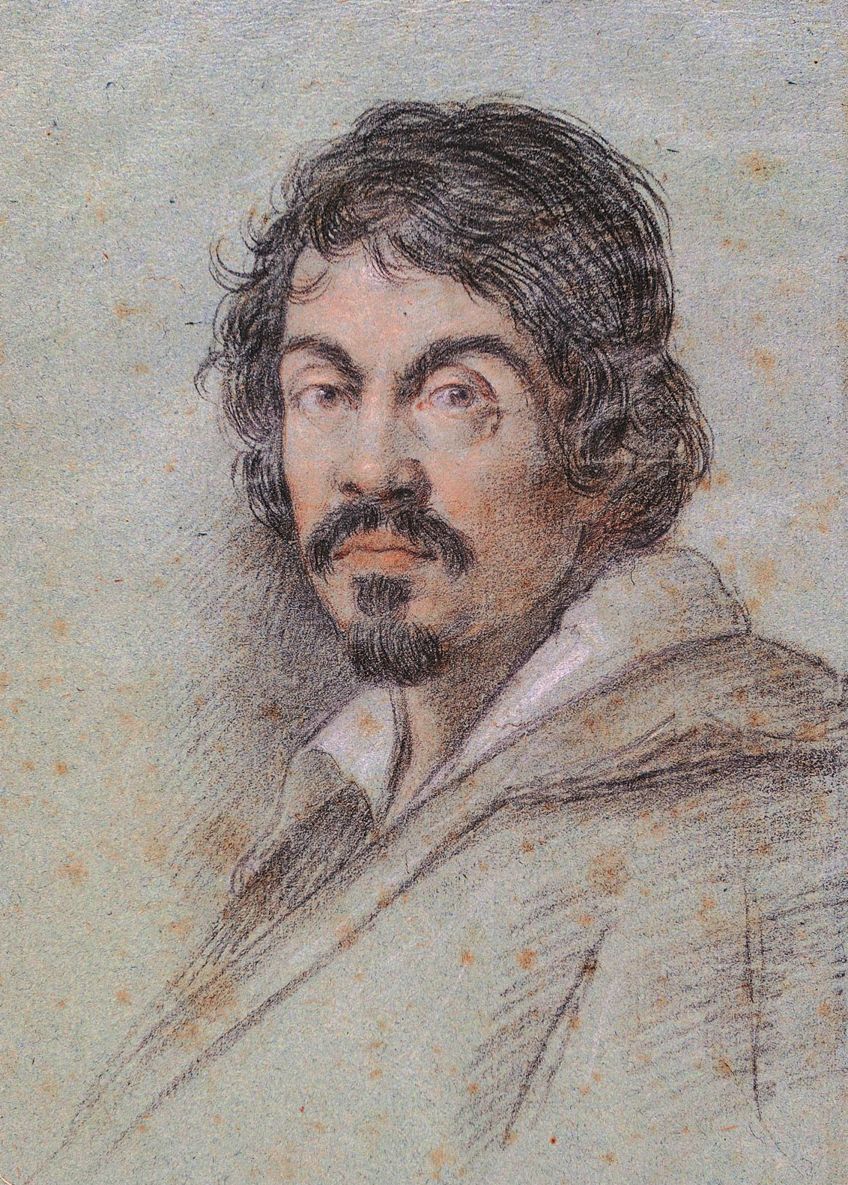
His paintings also depicted realism, notably in his figures, who appeared as everyday humans compared to the idealistic portrayals often found in Renaissance paintings. He died on July 18th, 1610. His famous paintings include Narcissus (c.1597 – 1599), Judith Beheading Holofernes (c. 1598 – 1599), and The Calling of St. Matthew (1599 – 1600).
The Entombment of Christ (c. 1600 – 1604) by Caravaggio in Context
| Artist | Michelangelo Merisi da Caravaggio (1571 – 1610) |
| Date Created | c. 1600 – 1604 |
| Medium | Oil on canvas |
| Genre | Religious painting |
| Period/Movement | Baroque art |
| Dimensions (centimeters) | 300 x 203 |
| Series/Versions | N/A |
| Where Is It Housed? | Pinacoteca Vaticana, Vatican City, Italy |
| What It Is Worth | The price is uncertain. |
In the article you will read more about the painting, The Entombment of Christ by Caravaggio, whose full name was Michelangelo Merisi da Caravaggio. A contextual analysis will discuss when this painting was created, which will then be described in terms of its subject matter and art elements in a formal analysis, followed by a conclusion.
Contextual Analysis: A Brief Socio-Historical Overview
It is believed that Caravaggio was commissioned in 1601 by Girolamo Vittrici to create a new altarpiece painting for the family chapel named the Chapel of the Pietà in Santa Maria in Vallicella.
This resulted in Caravaggio’s rendition of the Deposition of Christ, otherwise known as the Descent from the Cross, after His crucifixion, which is from the Gospel of John from the Bible’s New Testament.
Formal Analysis: A Brief Compositional Overview
The Entombment of Christ by Caravaggio is a beautiful Baroque rendition of the moments after Jesus Christ was taken off the Cross after His Crucifixion. Let us take a closer look at how Caravaggio embedded his own artistic styles that made it uniquely emotional, realistic, and dynamic.
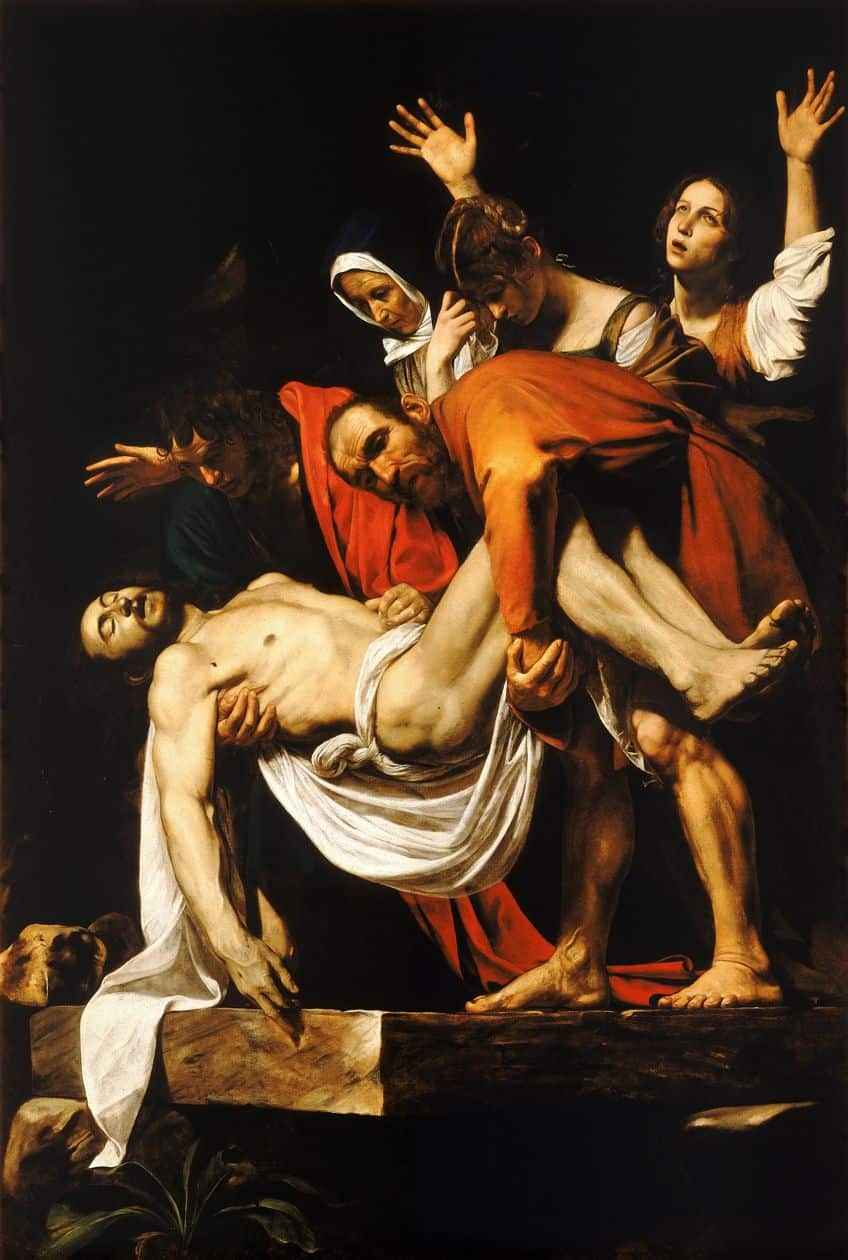
Subject Matter: Visual Description
The Entombment of Christ by Caravaggio depicts six figures, of which one is Jesus Christ’s dead body after he was crucified filling up the foreground. Jesus Christ is being held and carried by two male figures, namely, John the Apostle, or Saint John, on the left, and Nicodemus on the right.
Both men appear focused on their task at hand as they engage, hunched over, to carry the limp and somewhat heavy-looking body of Jesus Christ into the tomb, which is further illustrated by Christ’s lifeless right arm loosely hanging down the side and his right fingers lightly contacting the stone slab. John’s right arm cradles Christ’s upper back, which is further supported by John’s right knee.
Nicodemus has both arms wrapped around Christ’s knees while his head is turned to his left, towards us, the viewers.
Both his feet are flatly placed and visible on the flat stone slab, which further depicts Nicodemus’ sturdiness as he tries to balance Christ’s body in his grip. Behind the two men holding Christ are three women, namely, the Virgin Mary on the left, who appears as a nun and has her right arm and hand stretched out towards Christ’s body; Mary Magdalene is on the right and holding a handkerchief in her right hand, and Mary of Clopas is standing at the back, behind the other two Mary’s, with both her hands raised while looking up in anguish and mourning. In the foreground is the stone slab and along the left edge of the composition is what appears to be the opening to the tomb where Christ’s body will be laid. The immediate foreground depicts the ground and some vegetation.

Color and Value
Caravaggio depicted his characteristic contrasts of light and dark in The Entombment of Christ, which is known as tenebrism. For example, notice the almost black background contrasted with the lighter areas illuminating the figures’ bodies and faces.

Texture
The Entombment of Christ depicts implied textures, which creates a heightened sense of realism. For example, the soft folds of the figures’ clothing, notably Christ’s white drapery hanging down the stone slab. This softness is contrasted by the hard surfaces of the stone slab and the rocks.
Furthermore, the detailed depiction of the figures’ musculature creates further realism in the composition.

Shape and Form
The Entombment of Christ by Caravaggio depicts naturalistic shapes and forms, from the figures to the natural surrounding environment. There are also geometric shapes, for example, the square or block-like shape of the stone slab.
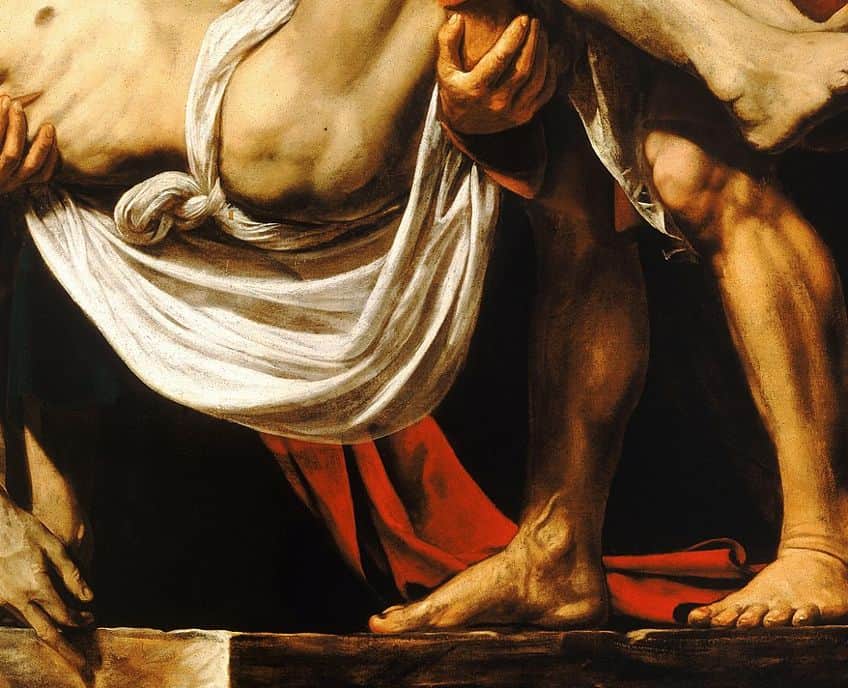
Line
There are a variety of lines that compose The Entombment of Christ painting by Caravaggio, from the rounded and curved naturalistic lines of the figures to the straighter lines of the stone slab in the foreground.
A diagonal directional line starts from the outstretched arms of the woman in the background, from the upper right, which leads our gaze downward to the Virgin Mary’s outstretched arm towards Christ’s head, the lower left.
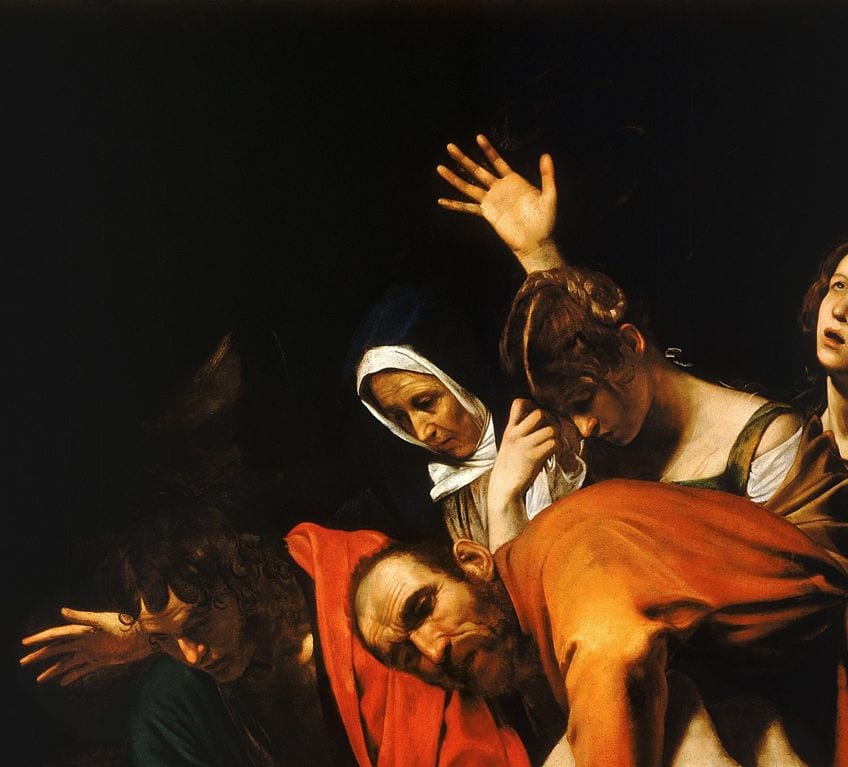
Space
Caravaggio created a three-dimensional space in his The Entombment of Christ painting utilizing techniques like foreshortening of Christ’s body, notably His feet or Nicodemus’ left elbow. The foreground space appears almost open as if we, the viewers, can be a part of it.

Caravaggio’s Moments of Realism
The Entombment of Christ by Caravaggio was honored by other prominent artists like Peter Paul Rubens, who painted his own version of Caravaggio’s scene titled The Entombment (c. 1612 – 1614), now housed in the National Gallery of Canada. There is also a copy of Caravaggio’s painting in the Chapel of the Pietà, and the original is housed at the Pinacoteca Vaticana in the Vatican City in Italy.

This article briefly outlined The Entombment of Christ by Caravaggio, it holds a depth and wealth of meaning, not only in its subject matter but its formal artistic qualities. While the subject matter was not a novel idea, Caravaggio incorporated his own distinct take on it and it was one, among many, of his masterpieces.
The Entombment of Christ by Caravaggio depicts a heartfelt moment from Jesus Christ’s death, and a moment captured in time just before Christ was about to be buried. We are included in the scene and can almost reach out to Christ’s hanging arm on the stone slab. To this day, Caravaggio’s work continues to transport us to that moment after Christ’s death – a moment filled with grief, mourning, and anticipation of what is to come.
Frequently Asked Questions
Who Painted The Entombment of Christ?
The Baroque artist, famously known as Caravaggio, painted the oil on canvas titled The Entombment of Christ between 1600 and 1604. The painting depicts the Deposition of Christ and the moment He was carried into the tomb after His crucifixion. Some believe it may also depict Christ laid on the Stone of Unction, which was the stone upon where Jesus Christ was prepared for his burial.
Who Commissioned Caravaggio’s The Entombment of Christ?
The Entombment of Christ (c. 1600 – 1604) by Caravaggio was commissioned by Girolamo Vittrici in 1601. It was for the Chapel of the Pietà in Santa Maria in Vallicella, Italy.
What Style Is Caravaggio’s The Entombment of Christ?
The painting was done in the style of Baroque art, which was the style that characterized all of Caravaggio’s artworks. The Entombment of Christ (c. 1600 – 1604) depicts an intimate space while displaying techniques like tenebrism, which were stark contrasts between dark and light and heightened emotion.
Alicia du Plessis is a multidisciplinary writer. She completed her Bachelor of Arts degree, majoring in Art History and Classical Civilization, as well as two Honors, namely, in Art History and Education and Development, at the University of KwaZulu-Natal, South Africa. For her main Honors project in Art History, she explored perceptions of the San Bushmen’s identity and the concept of the “Other”. She has also looked at the use of photography in art and how it has been used to portray people’s lives.
Alicia’s other areas of interest in Art History include the process of writing about Art History and how to analyze paintings. Some of her favorite art movements include Impressionism and German Expressionism. She is yet to complete her Masters in Art History (she would like to do this abroad in Europe) having given it some time to first develop more professional experience with the interest to one day lecture it too.
Alicia has been working for artincontext.com since 2021 as an author and art history expert. She has specialized in painting analysis and is covering most of our painting analysis.
Learn more about Alicia du Plessis and the Art in Context Team.
Cite this Article
Alicia, du Plessis, ““The Entombment of Christ” by Caravaggio – An Analysis.” Art in Context. November 22, 2023. URL: https://artincontext.org/the-entombment-of-christ-by-caravaggio/
du Plessis, A. (2023, 22 November). “The Entombment of Christ” by Caravaggio – An Analysis. Art in Context. https://artincontext.org/the-entombment-of-christ-by-caravaggio/
du Plessis, Alicia. ““The Entombment of Christ” by Caravaggio – An Analysis.” Art in Context, November 22, 2023. https://artincontext.org/the-entombment-of-christ-by-caravaggio/.


